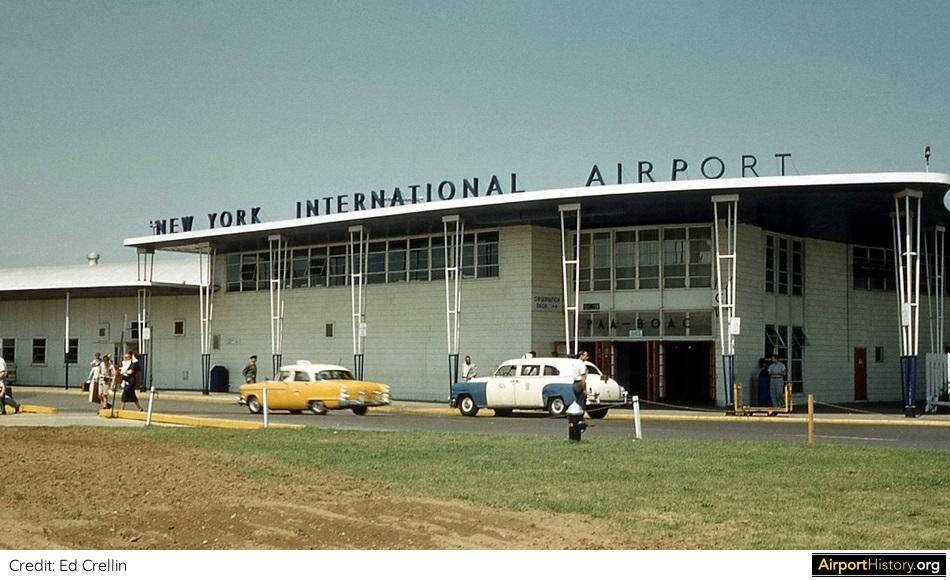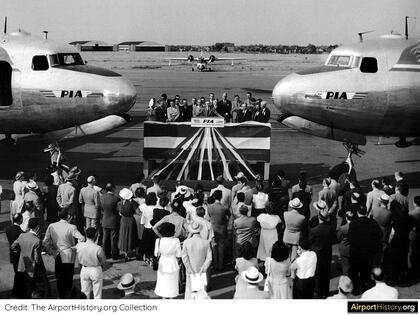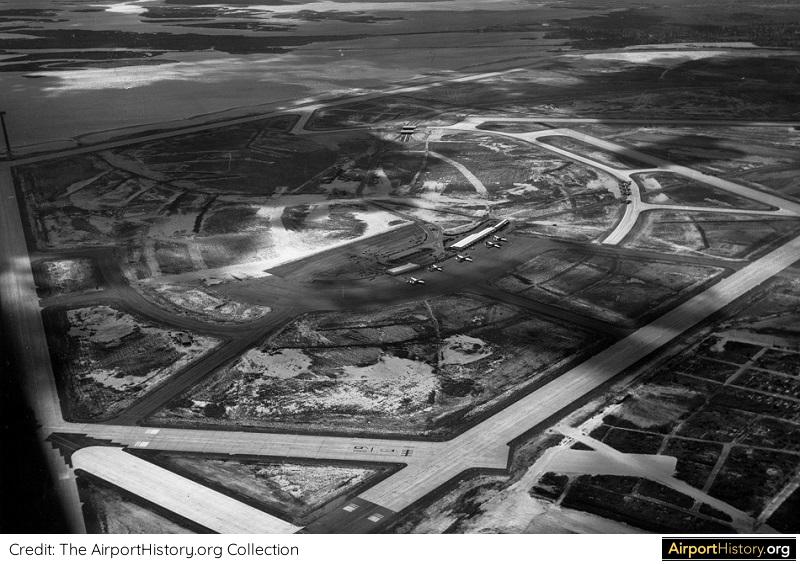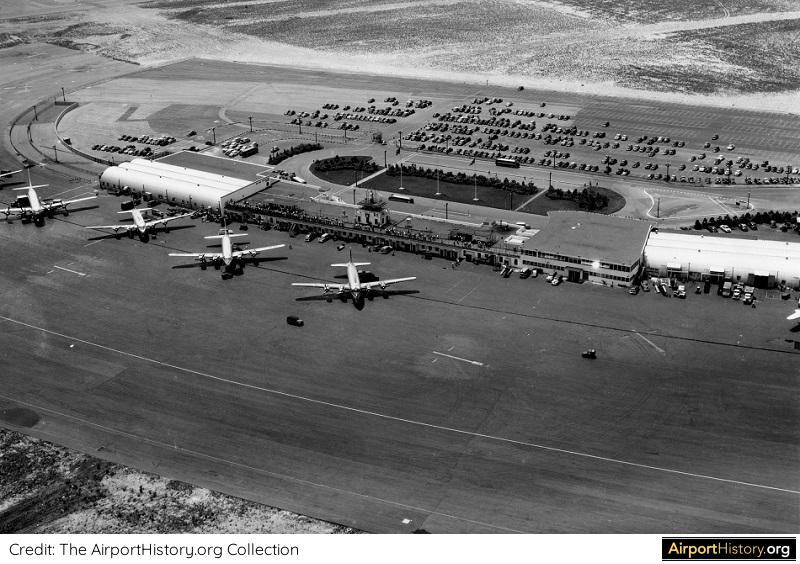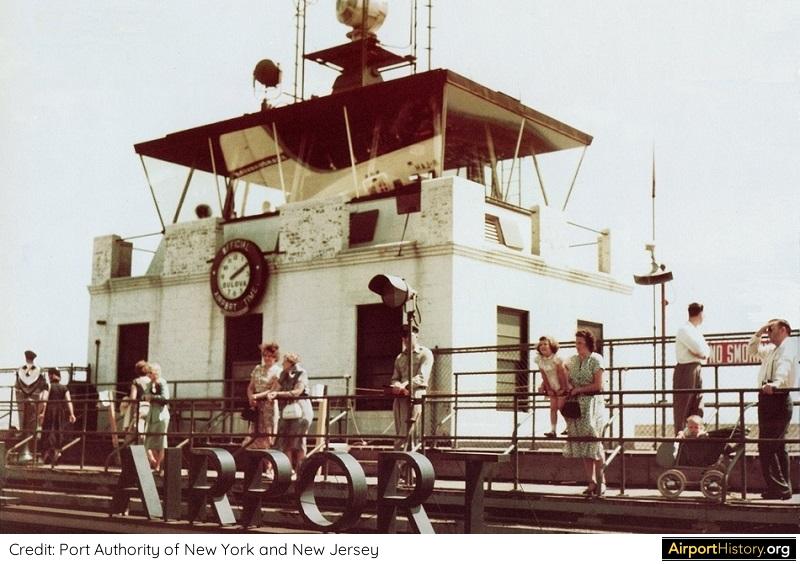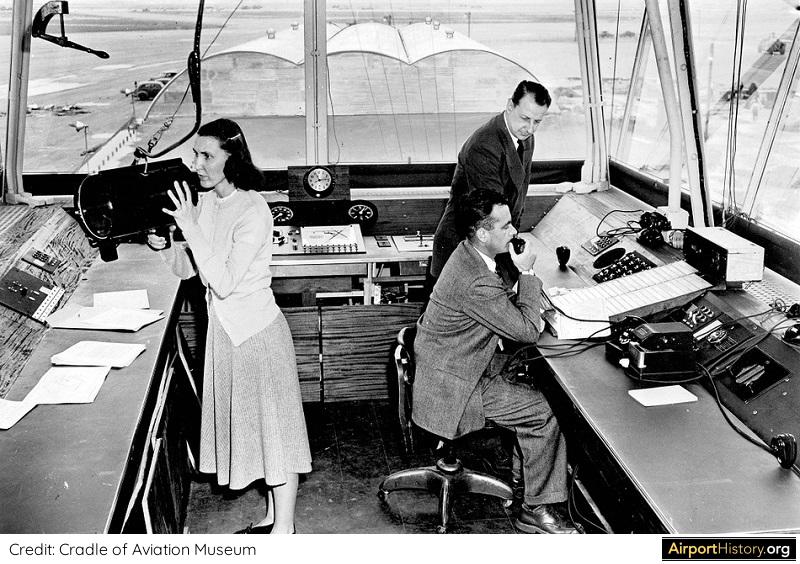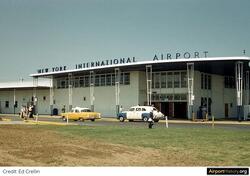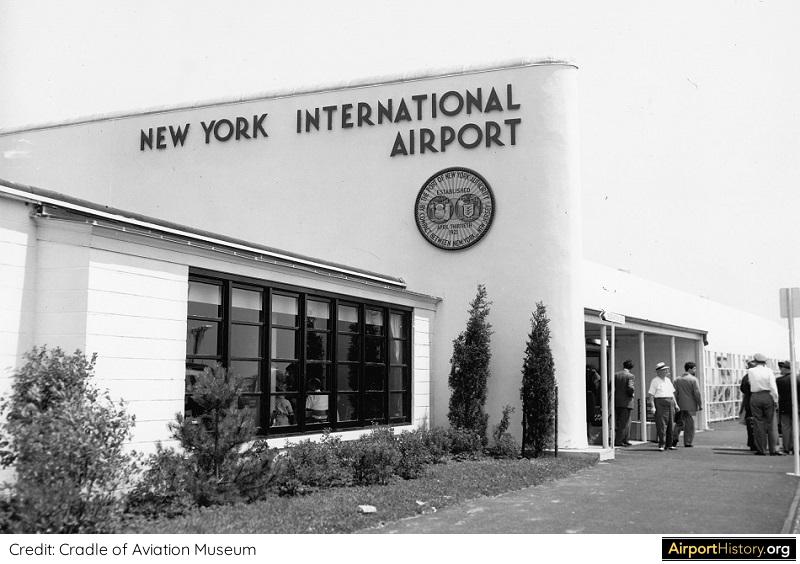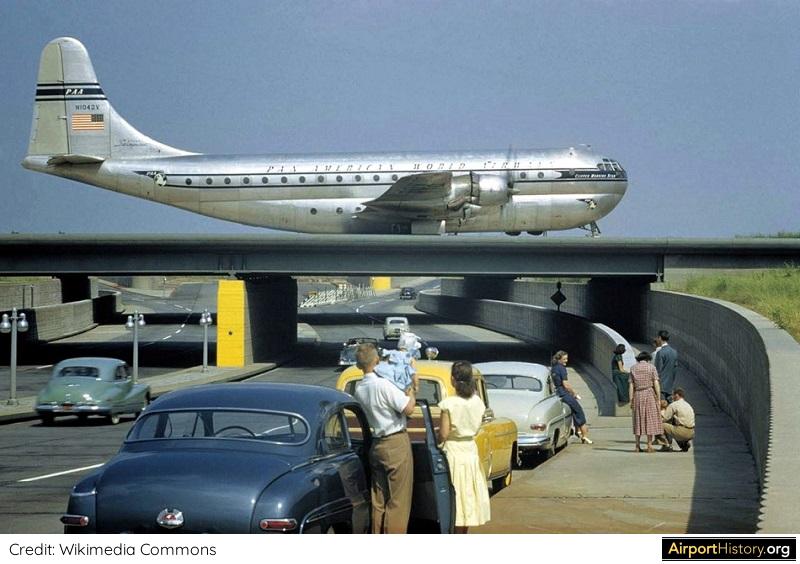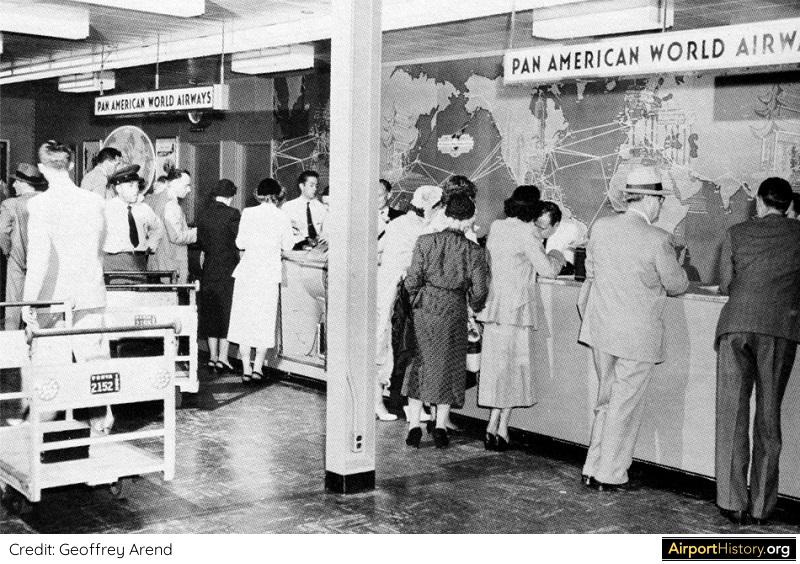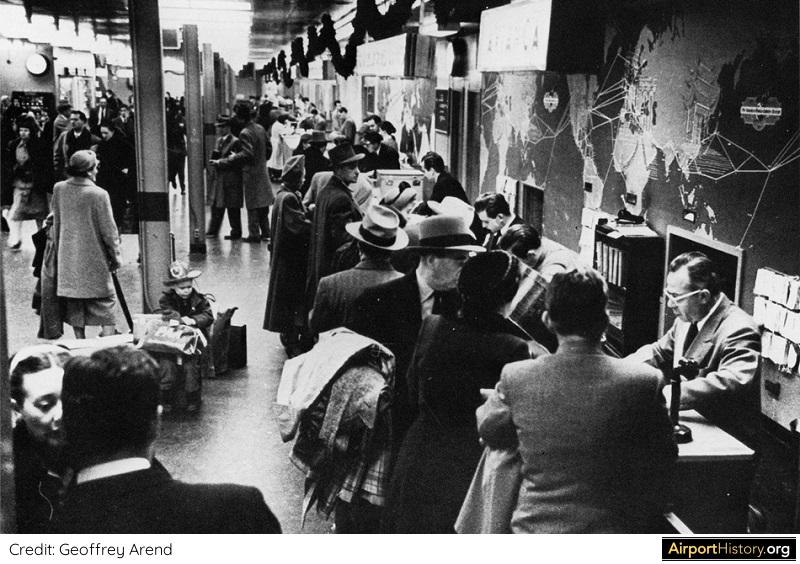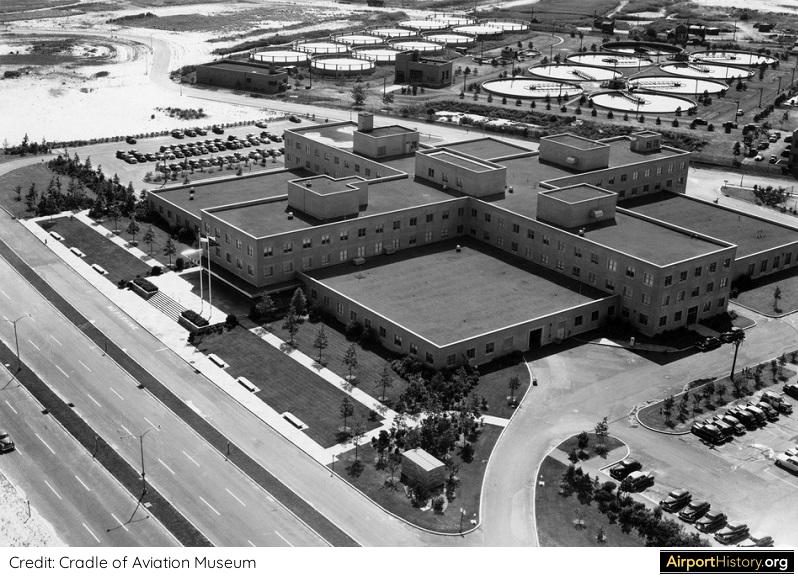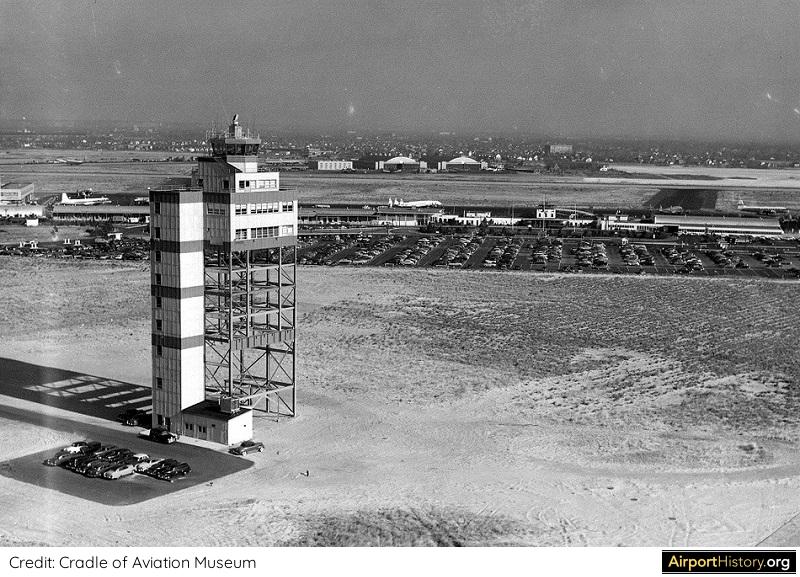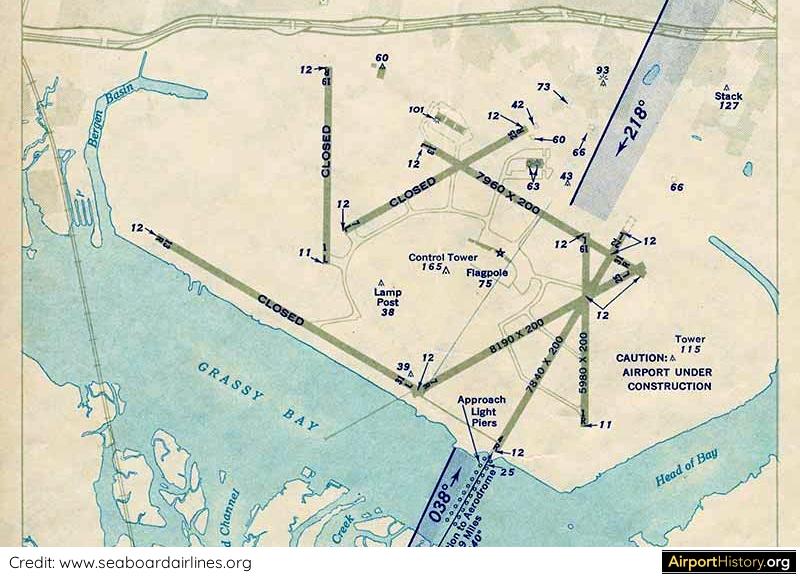Published: March 9, 2019
Updated: September 7, 2020
Updated: September 7, 2020
In the second part of our history of New York John F. Kennedy Airport we will focus on Idlewild's opening and early years of development.
Idlewild opens for business
|
FIRST FLIGHTS
Idlewild was finally opened to commercial flying on July 1st, 1948. Following test and service flights, a Peruvian International Airlines DC-4 from Santiago, Chile, made the first scheduled arrival on July 9th. Air France began transatlantic services from the new airport on Bastille Day, July 14th. The flight to Paris took 14 hours and 15 minutes, including three stops for refuelling. Officially named 'New York International Airport', Idlewild was officially dedicated on July 31st, 1948. |
I'm taking this opportunity to announce to the whole world that we now have the best damn airport in the world.
- Mayor Fiorello La Guardia
OPENING CEREMONY
The opening ceremony was attended by an estimated 215,000 spectators from around the world, including 500 journalists. The opening was accompanied by a huge military exhibit costing USD 10 million and included a flyover of the greatest number of bombers, jet fighters and other military aircraft ever assembled in peacetime at the time.
Other highlights were addresses by both President Harry S. Truman and Governor Thomas Dewey, who were rivals for the presidential election later that year, and who appeared together for the first time for the opening.
Sadly, the force behind the airport, Mayor La Guardia, passed away some six months before the airport's opening. During a speech just prior to his death, La Guardia announced, "I'm taking this opportunity to announce to the whole world that we now have the best damn airport in the world."
The opening ceremony was attended by an estimated 215,000 spectators from around the world, including 500 journalists. The opening was accompanied by a huge military exhibit costing USD 10 million and included a flyover of the greatest number of bombers, jet fighters and other military aircraft ever assembled in peacetime at the time.
Other highlights were addresses by both President Harry S. Truman and Governor Thomas Dewey, who were rivals for the presidential election later that year, and who appeared together for the first time for the opening.
Sadly, the force behind the airport, Mayor La Guardia, passed away some six months before the airport's opening. During a speech just prior to his death, La Guardia announced, "I'm taking this opportunity to announce to the whole world that we now have the best damn airport in the world."
|
VIDEO: IDLEWILD DEDICATION, JULY 31ST, 1948
|
THE BIG MOVE
With the opening of the new airport, all transcontinental and transatlantic flights were shifted from LaGuardia to Idlewild Airport. LaGuardia was left to serve flights within an approximately 1,500-mile (2,400-kilometer) range. By the end of August, Air France, KLM, Sabena, Swissair and SAS were operating transatlantic flights out of Idlewild. In September, National Airlines, the first US carrier to move in, started service. |
RUNWAYS
When the airport opened, there were six runways and a seventh under construction. Initially, three of the six runways were put into operation, with two more runways opening in 1949. Runways 01L/19R and 07L/25R were kept in reserve, but finally were never used.
When the airport opened, there were six runways and a seventh under construction. Initially, three of the six runways were put into operation, with two more runways opening in 1949. Runways 01L/19R and 07L/25R were kept in reserve, but finally were never used.
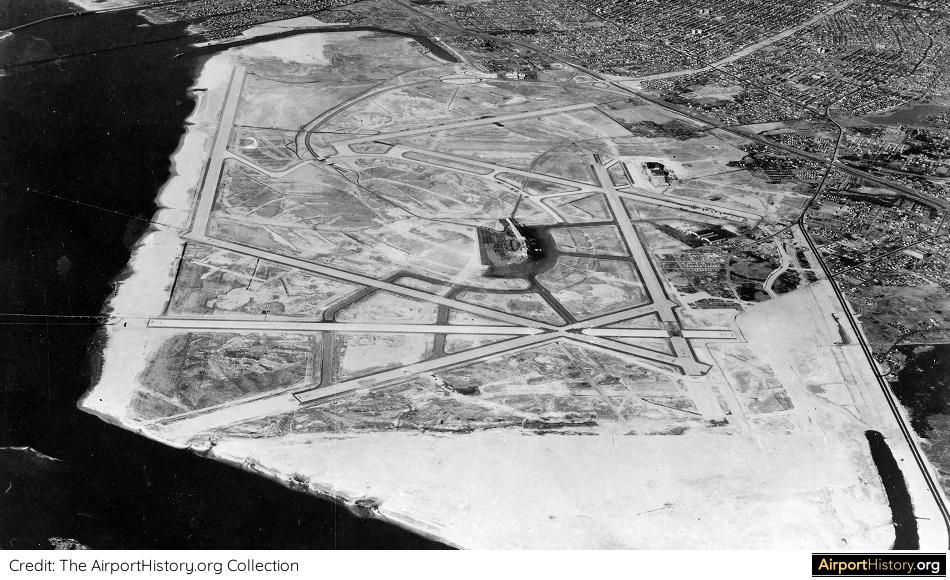
A 1949 aerial looking northwest. At this point, only three of the six runways that were built have been put into use. A new addition is the instrument runway 04/22 (running from the left to right in the image), providing the airport with a total of four operational runways. Note the central terminal area, which is still largely undeveloped.
Idlewild takes off
MORE AIRLINES COME TO IDLEWILD
In its first full year of operation, 1949, the airport handled 222,620 passengers and 18,115 aircraft movements. British Overseas Airways Corporation (BOAC) moved in during January 1950 and El Al started service the following April. Other foreign airlines starting service from Idlewild included Iberia, Aer Lingus, Avianca and Trans Canada. Major US airlines such as Pan Am, TWA, American and United joined National in the cramped interim terminal.
In its first full year of operation, 1949, the airport handled 222,620 passengers and 18,115 aircraft movements. British Overseas Airways Corporation (BOAC) moved in during January 1950 and El Al started service the following April. Other foreign airlines starting service from Idlewild included Iberia, Aer Lingus, Avianca and Trans Canada. Major US airlines such as Pan Am, TWA, American and United joined National in the cramped interim terminal.
It was clear that modern and expanded facilities were necessary for the rapidly expanding airline operations.
EXPANSION PROJECTS
In the ensuing years, the temporary terminal was upgraded and expanded to accommodate the growing traffic. Consequently, the terminal was getting an ever less temporary feel about it. In 1949, a new instrument runway (04/22), allowing aircraft to take off with reduced visibility, was put into use.
In the ensuing years, the temporary terminal was upgraded and expanded to accommodate the growing traffic. Consequently, the terminal was getting an ever less temporary feel about it. In 1949, a new instrument runway (04/22), allowing aircraft to take off with reduced visibility, was put into use.
GALLERY: EARLY IDLEWILD (1949-1950)
Enjoying this article?
Sign up to our e-mail newsletter to know when new content goes online!
FIRST PERMANENT BUILDINGS
In 1951, the first major permanent structure opened on the airport's periphery, the federal building, housing Federal Aviation Administration (FAA) employees overseeing operations at Idlewild and other New York area airports.
Another major milestone was reached in 1952, with the opening of an 11-floor permanent air traffic control tower, from which ground movements, departures and landings were controlled. This tower was planned to become integrated into the future passenger terminal complex.
Other notable improvements were the construction of 11 hangars, an air traffic control center which monitored air traffic movements in the NY area, a large air freight building, and a weather bureau. By the late 1950s, USD 235 million had been spent on developing Idlewild.
In 1951, the first major permanent structure opened on the airport's periphery, the federal building, housing Federal Aviation Administration (FAA) employees overseeing operations at Idlewild and other New York area airports.
Another major milestone was reached in 1952, with the opening of an 11-floor permanent air traffic control tower, from which ground movements, departures and landings were controlled. This tower was planned to become integrated into the future passenger terminal complex.
Other notable improvements were the construction of 11 hangars, an air traffic control center which monitored air traffic movements in the NY area, a large air freight building, and a weather bureau. By the late 1950s, USD 235 million had been spent on developing Idlewild.
VIDEO: NEW YORK IDLEWILD AIRPORT IN THE 1950s
GALLERY: IDLEWILD GROWS (1951-1956)
This concludes Part 2 of our history on John F. Kennedy Airport. Click below for Part 3, where we will explore the plans for the expansion of Idlewild.

